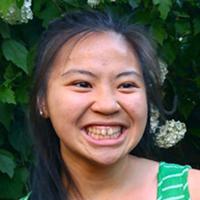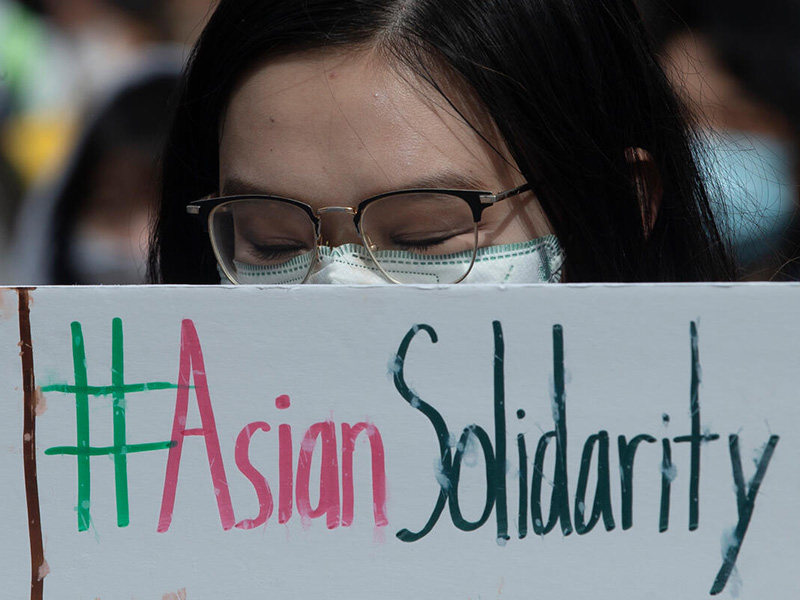Going for walks has usually been a lifeline for me during the pandemic.
Hearing the chirping of songbirds or faint conversations through nearby windows reminds me that my neighbourhood is still full of life, a relief after contorting my own to fit within my home for over a year. It shows me that the world still turns, and I still enjoy being a part of it.
Except when I’m reminded that I can’t. On a recent walk, I heard someone spit in my direction — far enough not to feel it, but loud enough to hurt. When I looked up, a man — bearded and white, I noticed, because his face was unmasked — greeted me with a sneer.
I kept walking, but overheard his companions asking him why he spat at me. “Just for walking too loudly,” he said.
Anti-Asian racism has generally increased globally since last year, fuelled by growing xenophobia amid the spread of COVID-19. And Vancouver was recently labelled the “anti-Asian hate crime capital of North America.”
Worsened anti-Asian racism in Vancouver has the community feeling especially concerned, and wondering: how can we keep ourselves safe?
Heiky Kwan, a community activist and advocate, says finding the answer is a collective responsibility. Investing in education and bystander intervention workshops empower the people who want to help, she says, and prepares them to safely and effectively respond to racism.
“When I was on the receiving end of a hateful incident, it was more important that those around me came to my aid,” she says.
Kwan prefers to focus on this community-based approach to safety rather than encouraging police involvement. Involving the police “might cause undue harm to other vulnerable communities,” she says.
Kimberley Wong, the race and equity program manager at the Hua Foundation, agrees. She says policing, especially for those who are substance users or unhoused, can marginalize people further — particularly Black and Indigenous people who are overrepresented in police databases due to facing more street checks than other groups. Her work at the foundation, a youth non-profit that advances social change through cultural heritage, focuses on building community partnerships and developing public programming and tools to advance racial equity.
But Wong acknowledges that it’s not easy to agree on an ideal strategy for community safety and others feel differently.
Navigating these discussions is part of her other role as co-chair of the Legacy Stewardship Group, which represents over 40 groups in Vancouver’s Chinatown, including clan associations, non-profit organizations and businesses.
Some in the community do want to rely on policing as a solution, and they want more officers available to patrol the area, she says.
Yuriko Iga, a business owner in Chinatown since 2003, says a police presence makes her feel safer “because I often have to leave my business at late hours.”
But Iga, a second generation Japanese-Canadian and owner of the BLIM arts and crafts store, is also thankful that, so far, she has never experienced “anything life-threatening” enough to make her call the police.
Anti-Asian racism — mainly slurs and “go back to your country” type comments — has always been prevalent here, she says, so it doesn’t feel especially different now. “You just get desensitized to it after a while.”
Instead of enduring racism, Danny Quon would rather talk about it with his community and ask what safety means to them.
Quon, who teaches dragon and lion dance at the Hon Hsing Athletic Club of Vancouver, hosted a dialogue within his club last month to do just that. Over 30 students and members of the group met virtually to share their concerns about anti-Asian racism.
Witnessing so many recent incidents, either personally or in the news, had taken a toll on the students. One horrifying example was when an elderly Asian woman in San Francisco’s Chinatown was forced to fight off her own attacker after being punched in the face.
“That situation, which already infuriated me, infuriated my students like you wouldn’t believe,” says Quon.
But the dialogue allowed Quon’s students to express themselves in a place where their experiences would be validated, which helped them think expansively on how to tackle anti-Asian racism, he says.
They didn’t come up with a definitive answer. But just connecting with each other may have already improved things.
Wong says any effort to address anti-Asian racism should start with this type of relationship-building. “Creating safer communities starts with people who have connections, have built and trusted relationships with people who are experiencing this marginalization firsthand.”
Many community-based initiatives, like establishing ways to document racist incidents or providing translated information about pandemic safety, have developed from existing connections among peers in the community. Wong cites projects like a grocery delivery program in Chinatown, which lets community members receive the support they need while regularly checking on each other.
Nurturing these existing networks of support should be a focus, says Wong. Demonstrating this consistency of care proves a commitment to the community and shows them who they can rely on for support.
After being spat at during my walk, the first thing I did when I got home was reach out to my community for support. I sat with my loved ones, texted my friends and expressed my pain to them.
Their immediate response was to ask me what I needed, and how they could help. They provided suggestions of what to do, and even offered gifts of bubble tea and kumquats.
But most importantly they gave me their time.
Being part of a community won’t prevent further racism from happening or guarantee that I’ll feel completely safe the next time I go for a walk. But it can ensure that I’ll always have support, and know who will be there to offer it. ![]()
Read more: Rights + Justice

















Tyee Commenting Guidelines
Comments that violate guidelines risk being deleted, and violations may result in a temporary or permanent user ban. Maintain the spirit of good conversation to stay in the discussion.
*Please note The Tyee is not a forum for spreading misinformation about COVID-19, denying its existence or minimizing its risk to public health.
Do:
Do not: